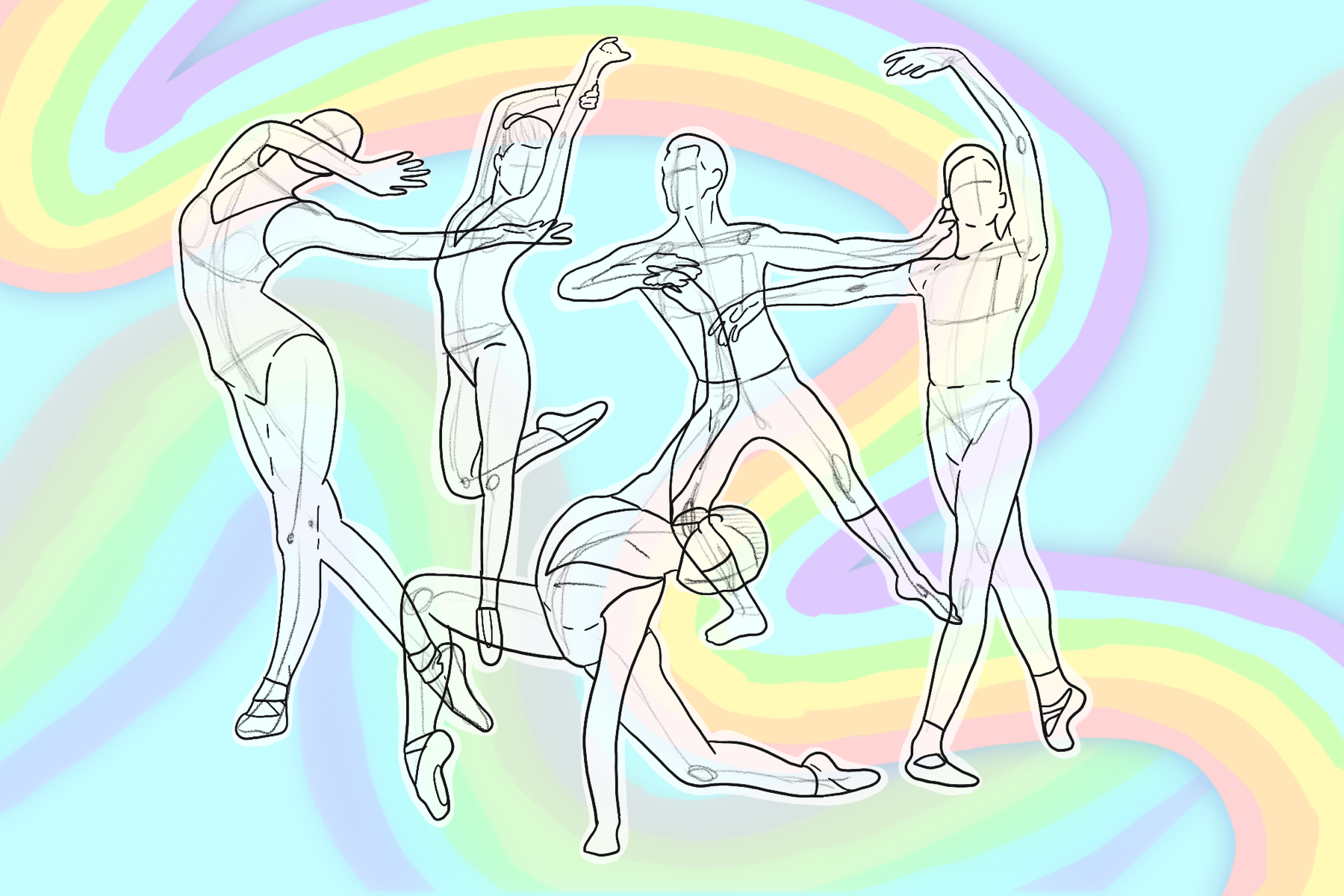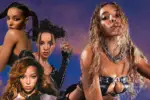One of the greatest strengths of the global dance community is its inclusion and acceptance of everyone, regardless of how they identify. When people dance together in a class or on a stage, they are communicating and connecting through movement that doesn’t rely on similar identities. In fact, varying perspectives are often valued in dance studios across the world, creating a diverse global community.
Sexuality and gender identity are included in this diversity. In order to remain inclusive, however, LGBTQ+ dancers must be represented on a large scale to ensure that all feel welcome and accepted. The five dancers on this list do this and much more. Each one has had an incredible career in the entertainment and dance industries and serves as a voice for up-and-coming LGBTQ+ dancers through their social media presence.
Harper Watters
Harper Watters, originally from Dover, New Hampshire, grew up training in classical ballet schools across the country. He is now a soloist at the Houston Ballet, where he has performed iconic roles such as the Prince in “The Nutcracker” and Sancho Panza in “Don Quixote.”
Watters gained much of his following from his popular Instagram and TikTok accounts. The content he shares with these audiences ties together his classical ballet training with his identity as a gay man. Many of his posts show him posing in classical ballet or modern dance shapes while wearing androgynous fashion or heels. Watters’ most popular videos show him and other members of the Houston Ballet walking and dancing on treadmills in heels.
The team is also featured on his YouTube series “The Pre Show,” which brings viewers into the Houston Ballet dressing rooms as the performers prepare for a show while being authentically themselves. All of Watters’ content has an important message: Ballet performers are diverse, and someone’s identity doesn’t conflict with their classical training and performance. The inclusivity Watters portrays in his content on all platforms contradicts the usual perception of ballet dancers as harsh and hyper-focused and shows young LGBTQ+ dancers that their identity is an asset to their careers in performance.
Brian Friedman
As a choreographer for pop music performers, Brian Friedman has a legendary resume. He has choreographed for music icons like Britney Spears, Cher and Beyonce as well as up-and-coming stars like Melanie Martinez and ITZY.
However, most of his current work takes place in the classroom; Friedman instructs master courses at dance studios all over the world and is a resident teacher at Radix Dance Convention. In his classes, Friedman teaches some of the most viral and challenging jazz-funk choreography popularized on social media. His choreography, which is shared on both his Instagram page and YouTube channel, is doing the important work of teaching elements and techniques from past LGBTQ+ dancers to young performers.
Much of Friedman’s choreography includes elements of ball culture, which is a queer performance tradition. Most evident in his athletic choreography are elements of voguing such as miming, precise arm movements and long lines of the body. All of these voguing traditions and their blend with the jazz-funk technique are particularly evident in his choreography to “Wash & Set” by Leikeli47. By using these techniques, Friedman brings the queer tradition of ball culture to both mainstream dance and training settings for young dancers. Friedman’s work imparts this knowledge onto the next generation, teaches them to appreciate queer culture and lengthens the longevity of voguing.
Mollee Gray and Jeka Jane
Mollee Gray and Jeka Jane are the most popular queer couple in the dance community. Gray is most recognizable for her role as Giggles in “Teen Beach Movie” and “Teen Beach Movie 2,” and Jane danced with Ariana Grande and appeared on HBO’s “Euphoria” and Netflix’s “The Prom.”
The couple got married in 2017 and since then have worked on many dance ventures together, such as their training program, theCREW. In this program, the couple instructs master classes for young dancers in a positive environment and also teaches their students about acceptance and inclusion. As a queer woman and a transgender man who co-own a training program, Gray and Jane disrupt the common conception that training programs and dance studios are only run by straight women.
They are also members of The Pride House LA, a content house with all queer members. Founded with Gray’s fellow “Teen Beach Movie” cast members Garrett Clayton and Kent Boyd, The Pride House posts their take on popular TikTok trends. Often joined by other influential dancers like Merrick Hanna, Derek Hough and Todrick Hall, they authentically show their identities and offer encouragement to their LGBTQ+ followers. The Pride House acts as a central hub for dancers and influencers to show support for LGBTQ+ artists and fans. In both of these ventures, Gray and Jane offer education in an inclusive environment and provide platforms for people to show support for the LGBTQ+ community.
Zackery Lennon Torres
Out of all the stars who emerged from the “Dance Moms” universe, Zackery Torres has always been a fan favorite. She first appeared on Season 1 of “Abby’s Ultimate Dance Competition,” Abby Lee Miller’s rendition of the popular competition show “So You Think You Can Dance.” Torres later arrived on “Dance Moms” proper as a member of rival choreographer Cathy Nesbitt-Stein’s team.
After her appearance on the show, Torres went on to enroll at USC’s Glorya Kaufman School of Dance. She doesn’t share many of her current dance performances on social media — a reasonable choice given the “Dance Moms” producers’ propensity for oversharing — so she mainly posts about advocacy and gender inclusivity.
Much of Torres’ current activism is done through her media company, Continuum, which focuses on educating people on how to ensure inclusivity in their communities. Torres’ discussions of inclusivity often center on dance studios; she has called for dance teachers to stop dividing classrooms by gender and defining certain movements as “for boys” or “for girls.” Though these practices are traditional for many classes, they limit the gender scope in the classroom to a binary and make those in the room who do not fit within this binary uncomfortable.
Seeing someone many dancers looked up to on television both identify as transgender and advocate for gender inclusivity educates younger queer dancers on these issues. Torres’ fans can then bring this acceptance into their homes, communities and dance studios.
Conclusion
Each of these dancers, in addition to their incredible successes as dancers, greatly benefit the global LGBTQ+ community. Through their use of their platforms to educate their audiences about queer issues and offer representation to young LGBTQ+ dancers, Watters, Friedman, Gray, Jane and Torres all inspire identity expression and confidence and are well worth a follow.

















